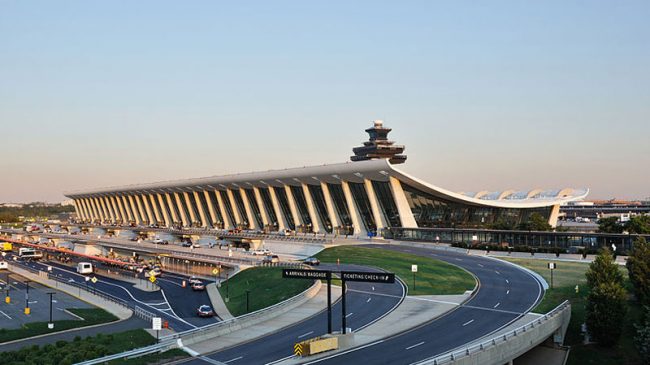On July 26th, after more than five years of construction, Washington Metro’s Silver Line began offering passenger service. The new route extends heavy-rail service to the western Fairfax County suburbs. The project is far from completed, however. Phase II, currently under construction, will extend the line another 11.4 miles west to Washington Dulles International Airport. Regardless of the number of riders, this project serves as a cautionary tale to taxpayers about the gross inefficiencies of traditional project management.
Many frustrated residents view the Silver Line as the latest development in a recent trend of diverting Blue Line trains. In June of 2012, Metro’s Rush Plus service rescheduled incoming and outgoing trains passing through Rosslyn. While the changes kept overall throughput stable at around 170 train cars per-hour, they decreased the Blue Line’s share from roughly 60 to 42 cars and increased the Orange Line’s share from roughly 109 to 130. Due to the addition of Silver Line trains and capacity restrictions in the Potomac Tunnel, Metro further reduced the number of Blue Line trains. Currently, Metro operates 74 Orange cars, 60 Silver cars and 35 Blue cars per-hour. This represents a 17% reduction in peak-time Blue Line capacity since Rush Plus and a whopping 42% reduction since May 2012.
Administrators estimate that these latest capacity redistributions will reduce service for 10% of Metro customers. Some Blue Line commuters have reported rush hour wait times as long as 12 minutes.
There are equity issues at play too. The Silver Line services Fairfax County which has the second highest median household income in the nation. The site of one of the Silver Line’s Fairfax stops, McLean, Virginia, boasts a median household income of $175,000 compared with $85,671 for Springfield, Virginia-the site of the Blue Line’s southernmost stop-and $51,000 for the nation as a whole. So those harmed by the extension are significantly less affluent than the beneficiaries.
But locals and nonlocals alike should be outraged by the enormous expense and glacial pace of construction. To date, the project’s first phase has milked taxpayers $2.9 billion. At almost $47,000 per foot of line, this figure denotes a budget overrun of $150 million. To make matters worse, construction took seven months longer than expected. The building materials, machinery and police officers that remained at worksites exacerbated congestion in the already crowded Tysons Corner area.
While Metro has increased fares, passenger farebox revenue was a small percentage of the Silver Line’s construction budget. Revenues from the Dulles Toll Road subsidized a full half of the Silver Line’s costs. In addition, the federal government provided $900 million. American taxpayers are also on the hook for the project’s second phase to the tune of $2 billion in federal loans. Collectively, the Fairfax County and Virginia governments paid $652 million, or 22% of total project costs.
Although transit megaprojects of the size and scope of Metro’s are always expensive, the process that the public transit service adopted virtually guaranteed an exorbitant price tag.
From the beginning, the project was plagued by no-bid contracts. The Virginia Department of Transportation (VDOT) awarded the contract to Bechtel and Washington Group International directly without soliciting other interested parties. Competitive bidding is crucial because it allows DOTs to select the company best suited to the specific demands of the project.
Equally problematic was Metro’s decision not to outsource the new Line’s operation. Although it makes sense that it would want to retain operational coordination between the different lines, Metro gave its contractors no long-term stake in the project. When the organization responsible for design and construction is not responsible for operation and maintenance, it will tend to use cheap construction materials that will eventually need replacing. This increases the facility’s life-cycle costs.
Finally, the fact that a huge portion of the project’s funding came from tax money eliminated financial incentives to prevent cost and schedule overruns. The public agency that oversaw construction, was not alert to overly optimistic best-case estimates because it could count on taxpayers to foot the bill. When “stakeholders” do not have a direct financial stake in a project, they simply pass on the costs to others.
The long-term concession model is a more enlightened approach to major public works. Instead of a politically connected company receiving a design-build contract, the winner of a competitive bid assumes responsibility for the project’s entire life-cycle. The concessionaire must leverage its future revenues (i.e. tolls) to secure loans from investors who actually have an interest in scrutinizing financial projections. Moreover, because the concessionaire cannot begin to amortize its debt until the project is operational, it strives to complete construction as efficiently and cost-effectively as possible.
While Metro users are right to complain about the Silver Line’s redistribution of train capacity, they should understand that there are even larger issues at stake. Metro’s reliance on uncompetitive bids, short-term contracts and public funding created significant moral hazards that contributed to the massive cost and schedule overruns the project exhibited. Future project planners should learn from the Silver Line’s example by recognizing the perverse incentives which it fostered. Where feasible, long-term concessions can correct these deficiencies and produce optimal infrastructure.
